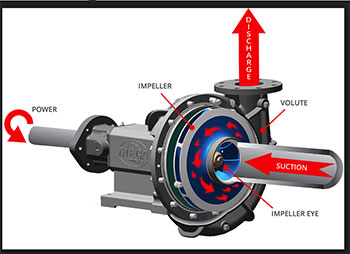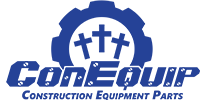Main Pump Problems and Solutions
When it comes to your machine, the main pump is one of the most costly when it comes to parts replacements. When you suspect your main pump is failing, there are a few steps you can take to determine what may be wrong.
Moisture contaminated by debris inside your pump can quickly cause problems. Installing a pump that helps prevent damage from this common type of wear-and-tear helps prolong the life of your main pump.
Pumps that have solids-handling capability and hardened wear plate metallurgy combat deterioration. Along with regular maintenance, fundamental startup and handling procedures also help keeping your pump running strong.
Here are some important tips:
Change the engine oil and filter after the first 100 hours.
When preparing for cold weather, drain the discharge line and volute so the suction line and volute drain enough to prevent damage from freezing to internal components including, wear plates and seals.
You can also remove the ejector ball in cold weather to prevent freeze-ups by allowing the volute to drain automatically during unexpected engine shutdowns.
Consider installing a volute drain hose that extends from the volute to below the waterline on the suction side so the water column in the line can help re-prime the pump.
To prevent suction directly from the bottom of a contaminated pit, use a floating screen on your suction that enables solids to pass that are no larger that the manufacturer's published solids-handling size.
It is very important not move the pump with hoses attached.
Here’s a quick breakdown of problems with steps that could possibly present a solution.

- If your pump doesn’t start, check the power supply, flush the pump clean, and remove any debris.
- If your pump does not prime, check the lift distance, reposition the inlet or piping, remove any obstructions in the suction/strainer, or ejector assembly. Check for o-ring and gasket damage, check the seat and valve for damage, and check the compressor drive and belts.
- If your pump outputs insufficient product, check the suction/discharge gauge reading, check and clear the strainer/screen, check hoses to make sure they aren’t obstructed or damaged, shorten hose length or increase hose diameter, reduce total dynamic head or consider pump selection, repair or replace the impeller, or adjust the throttle setting.
- If your pump requires excessive power, check the impeller and pump body, consider the pump being used, adjust the throttle setting, or check and reset the impeller clearances.
- If your pump vibrates or overheats, check the impeller and pump body, check and clean the strainer or screen, repair or replace the impeller, reduce excessive suction lift, or adjust the throttle or speed setting.
- If your pump has milky hydraulic fluid or seal housing oil, drain and replace fluid or oil, rebuild or replace mechanical seal, and evaluate the pump cycle down time.
- If your pump fluid temperature is high, top off with clean fluid, replace a worn hydraulic motor, check for obstructions.
- If fluid in the reservoir is low, locate and replace broken hydraulic lines, replace o-ring seals in quick release coupling.
- If pressure relief valve is high, check for obstructions, replace the filter, repair or replace quick release coupling, check and tighten all couplings, re-adjust valve for 3500 psi, check hydraulic hose length, check pump throughput.
- And if the electric pump trips, verify the power supply matches the motor requirements, and allow the pump to cool down.
Need a New Main Pump?




